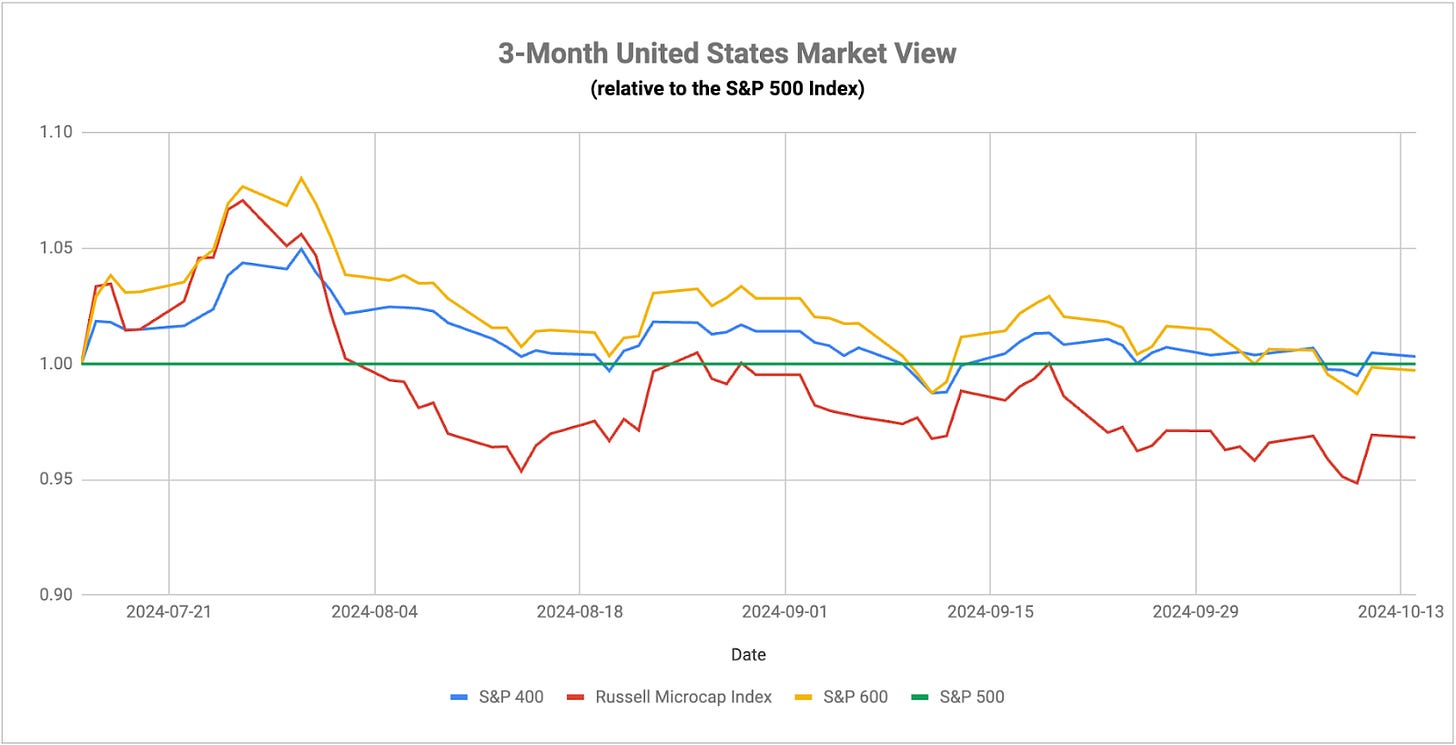With little this week in terms of major economic data releases, the markets can focus on other macroeconomic factors to move the markets. In particular, the Q3 earnings season is back in full force. While expectations are for a modest 5% earnings growth within the S&P 500, the markets are looking at forward guidance for indicators that profit growth will be back on the upswing and the soft landing is on track. So far, the news is encouraging, but we’re still in the very early stages of the reporting season.
The big banks and financial companies, as is tradition, have kicked things off and we may be seeing the return of a big revenue driver for the sector - investment banking. Both Goldman Sachs and Citigroup delivered big gains on this front during Q3 - the former reporting a 20% year-over-year gain in investment banking fees and the latter improving by 44%. With traditional retail banking revenues either flat or on the decline, a pickup in activity over on the M&A and trading side would be a nice augment to some of the company’s other business lines. More importantly, an increase in investment banking activity suggests that companies are feeling more optimistic about their company’s and the economy’s outlook and are no longer looking to hold back in order to survive a potentially challenging period.
Another thing to watch this earnings season is the semiconductor stocks. NVIDIA has been powering the whole sector higher on the strength of the AI boom, but it’s time to see the wealth getting spread around to others within the sector. Taiwan Semiconductor is scheduled to report earnings this week and is expecting big revenue gains. There’s no sense that the AI spending boom is ending anytime soon, but it would be encouraging from a longer-term perspective to see multiple players in this space riding the wave. I expect we’ll get confirmation of that over the next few weeks and that could push this sector higher in the near-term.
We’re going to get a lot of commentary from Fed members this week, but the general consensus seems to be tilting in the direction of a gentler path of monetary easing over the next couple of quarters. Minneapolis Fed president Neel Kashkari recently noted that he feels policy still remains restrictive, but there’s a need to balance both sides of the central bank’s dual mandate. That could be an implicit acknowledgement that inflation is either 1) not making as much progress towards the 2% goal as he’d like and/or 2) inflation risks are heating up again. I think both are probably true and should help squash some of the overdovishness that still exists in corners of the market. Further 50 basis point cuts should probably be off the table at this point in favor of a slow and steady move towards normalization.
Finally, the presidential election is just a few weeks away, which means we may start seeing investors hedging towards a particular outcome. While both agendas are likely to drive further deficit spending and increases in the federal debt, one of the biggest potential wild cards is a trade war with China. This is obviously a much likelier outcome in a second Trump term and it’s important to remember that tariffs are nothing more than a tax on consumers. The details of if or how these would be implemented have yet to be revealed, but if they were put in place, it could be one of the quickest paths to slowing the economic growth cycle.
Keep reading with a 7-day free trial
Subscribe to The Lead-Lag Report to keep reading this post and get 7 days of free access to the full post archives.


